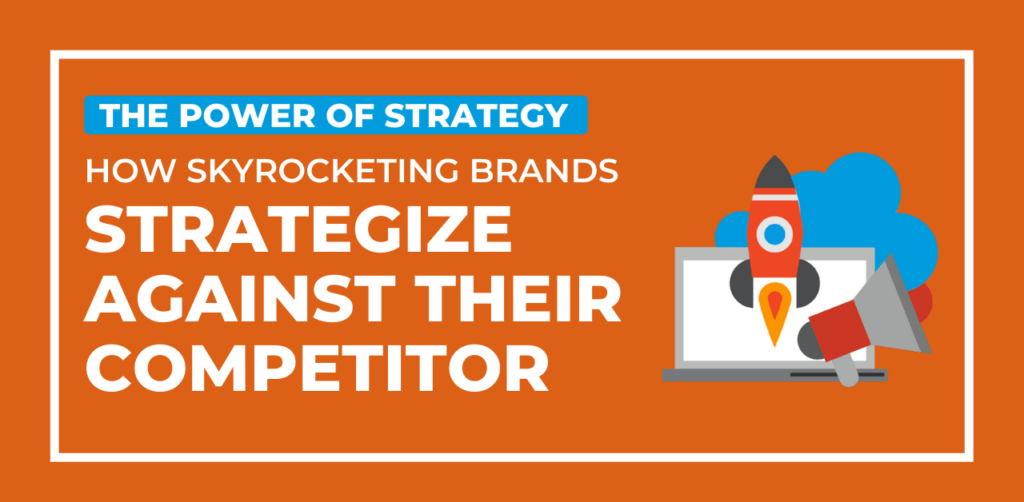Share
Today, many people venture into developing brands, while big companies continue to strengthen. As a result, the competition in business has been growing dramatically. However, how did skyrocketing brands manage to grow and remain competitive? This is an enticing question that both new and existing brands want to know. The power of brand strategy can provide an answer to this.
Brand Strategy, also known as a brand development strategy, is a long term plan to achieve business’ long term goals that leads to the development of identity, experience, and success. The big misconception about brand strategy is that it is about the style guide that includes the logo, color palette and tone, but this is more than that. It serves as the plan to the business’ overall function in its internal culture, marketing and customer experience, therefore it encompasses the intangible aspects of the business as well.
Indeed, this plan is extremely complicated that businesses have difficulties. To provide a guide, here’s how to develop an effective brand strategy.
1. Know the Purpose

This is the most important step to start developing a brand strategy. Be clear on “Why does this brand exist?”. This relates to providing solutions to the problems of the audience. It is also important to pay attention to the value that the brand could offer to its audience more than the financial goals. From there, the brand can establish its mission, vision and values.
For example, Mcdonald’s is one of the successful fast food industries. Its mission is “to be our customers’ favorite place and way to eat and drink.” Its vision is “to move with velocity to drive profitable growth and become an even better McDonald’s serving more customers delicious food each day around the world.” These goals strongly reflect their focus on globalization, low price yet tasty food and excellent customer service.
2. Identify target customer

This needs to identify who will benefit from the brand and creating a buyer persona or profile of the target customer. As time goes on, customers need changes so a brand strategy needs development as well. Also, an outstanding customer experience with a brand is paramount. According to a survey, 73% of consumers identify customer service to be an important factor in their purchasing decisions. Indeed, their experiences build long term relationships and loyalty.
A good example is Starbucks. They identified that the general public who can afford their products daily are middle to upper-class individuals. Moreover, they strategized when they launched the Blonde Roast in 2019 to serve customers in the comfort of their homes or offices. In this case, it applied the line extension strategy that denotes the creation of new products in response to consumer demand.
3. Develop messaging strategy

This helps to know how to talk about who you are as a brand. If the brand messaging is well developed, it will communicate with consistency and authenticity. Some of the elements of brand messaging are personality, tone, tagline and value proposition.
A perfect example that depicts their messaging is Dove. Its personality falls into a natural, soft and friendly way with an empowering, confident and genuine tone. Dove pioneered the concept of Real Beauty that showcases the natural beauty of women. Their first campaign focused on a billboard where passers-by could vote on whether they were “Fat or Fab” or “Wrinkled or Wonderful,” with the results displayed on the billboard itself. It was effective as it converted into $2.5 to $4 billion in sales in the first ten years of the campaign. Truly, Dove has always been persistent to convey a powerful message. Now, the Reverse Selfie campaign addresses the social issue Dove highlighted that by the age of 13, 80% of girls distort the way they look online.
4. Design visual identity
This refers to all the visuals and graphics that build brand recognition. This sets up positive associations and meanings to the brand that words alone cannot convey. It includes the logo, color palette, typography, promotional materials and photos. Statistics reveal that using a signature color can increase brand recognition by 80%.
One of The World’s Most Valuable Brands in 2020 recorded by Forbes is Coca-Cola. It is one of the brands exceptionally recognized with its consistent visuals. The red color that hugely represents the brand symbolizes the energy, excitement, power, passion. It was also used to trigger impulse buying. Also, as stated by Business Insider, up to 94% of the world’s population recognized the Coca-Cola logo.
5. Analyze competitors
This needs research to understand how competitors strategize and interact with their audience. This also needs analysis when knowing how customers respond to competitors’ strategies and knowing what are strategies not yet executed. After all, the findings are not to imitate a brand, but instead to be unique.
Two of the largest E-commerce companies that had an effective analysis of the competition and remain distinguishable are Alibaba and Amazon. Alibaba reigns in China while Amazon does the same in America. Besides the geographical presence, their business model sets them apart. The former is B2B that acts as a middleman between buyers and sellers, while the latter is B2C that sells directly to consumers for both new and used items.
6. Build organizational culture
This refers to the set of beliefs, attitudes, values, practices and goals that are shared within a company. It is vital to be strongly determined to build a positive relationship with the employees, provide excellent customer service and drive better results. Mark Miller and Ted Vaughn, brand strategy experts, created “Culture Built My Brand”, a practical guidebook for business leaders seeking to build unique brands. This emphasized the importance of carefully planning one’s internal culture.
Netflix was one of the popular brands with a strong organizational culture and competitive position in the digital media streaming industry. It is known for upholding its One Five-Word Principle: Act in Netflix’s Best Interest. Their common practices include Sunshining that encourages employees to share a mistake they have made with colleagues. Another one is the Keeper Test that lets the managers ask themselves whether they would fight to retain an employee or not. Additionally, they apply no expense, no vacation and no uniform policy. Due to its persistent competition with brands like Disney and YouTube, Netflix is striving for improvements by improving the strategic application of its culture and making its online content more constructive.
7. Develop traditional and digital marketing strategies
These include all the forms of promotion of a brand. Both marketing strategies have their own way to drive great results for the business.
Traditional marketing has been transcended by digital marketing in many businesses, but it is still effective in boosting your brand. It enables a brand to interact with customers on a more personal level than you could online. Moreover, It provides customers with more tangible items than in digital platforms, where they may end up discovering the competitor’s products instead.
On the other hand, digital marketing is cost-effective and produces greater engagement with the customers. Also, 79% of people say that user generated content highly impacts their purchasing decisions. Most especially, due to the COVID-19 outbreak, businesses were challenged to focus on digital marketing. Based on the survey conducted by Tech.co, 76% of the small businesses upskilled during the lockdown with SEO, social media, learning a new language, and data analytics.
One of the brands with the best mix of traditional and digital marketing strategy is Samsung which was ranked eighth in The World’s Most Valuable Brands in 2020. One of the out of the box traditional marketing they had was Samsung’s The Frame: Where’s the Art? commercial. In fact, they also had a set of Guinness World of Records, such as the Largest Dodgeball Game in 2010 and Largest Photobook in the World in 2013.
Final Tip:
As the competition increases whether in small or big businesses, brand strategy gets more imperative to succeed. Hence, it is important to know how to develop it, however, no one size fits all in this. It needs a thorough plan to be able to create a strong brand as well as continuous development to adapt to the changes of the environment and people. For businesses that are stressed out about strategizing or want to prevent trial and error, they should take advantage of the experts in the field.
Verafede is one of the marketing teams that a brand can rely on in these worries. This team has expertise in events management, brand activations, and creative intelligence. It provides services to small or big brands that wish to skyrocket and effectively strategize in different aspects of business. To learn more about our services, connect with us here!
Related Reads:
8 Benefits of Hiring a Marketing Agency

Rica Mae P. Herrero
Rica Mae P. Herrero is a Communication student at the University of Caloocan City. She is a freelancer and a creative intern at Verafede. Also, she is passionate in performing arts and fitness.






